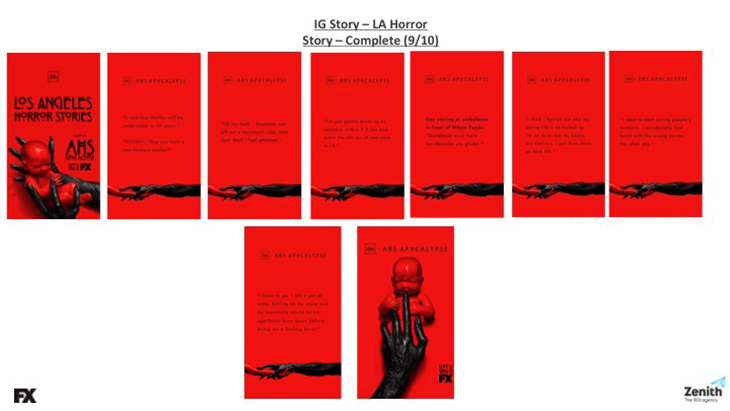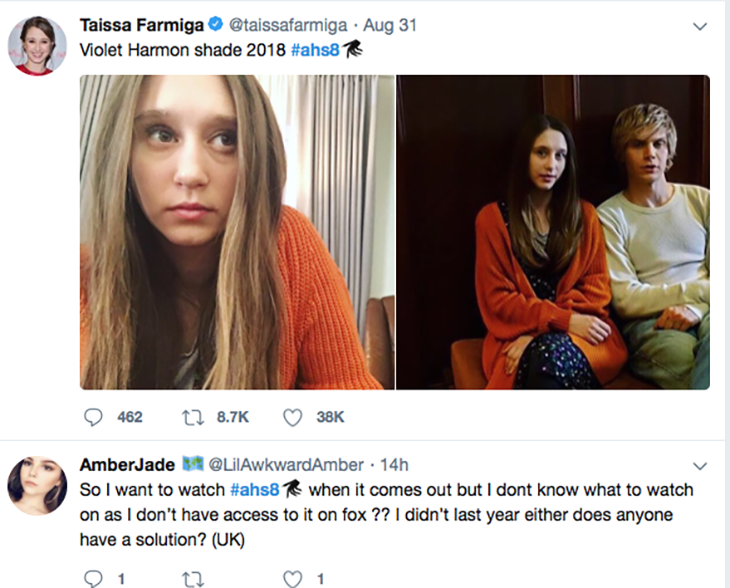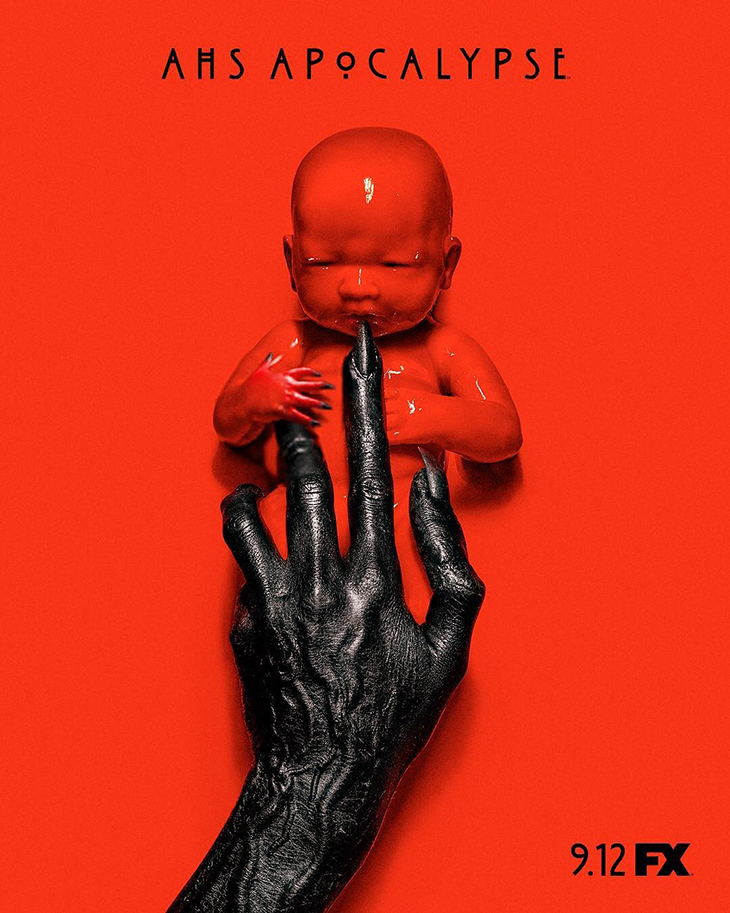American Horror Story is known for building up suspense for a new season without revealing what the theme will be for the latest chapter in FX’s anthology series.
The paid marketing approach for season eight’s Apocalypse was no exception, with Lance Reiss, senior vice president, advertising and media strategy, multi-platform marketing, taking the lead on highly creative teasers which were dropped across social media platforms like breadcrumbs.
“We have a lot of fun devising all the different angles to drive that excitement,” Reiss said.
For instance, through a partnership with mobile video network AdColony and Aurora, he and his team turned teaser promos into several pieces of interactive content where users could shake, swipe and press their devices to engage with different components of the video.
“Rather than just a static ad you see on your phone, we wanted to take pieces of our existing [audio and visual] campaign, and it allowed you to play around,” Reiss said. “You’re cutting the fig. That’s bringing the advertising to life.”
Another partnership with Pinterest turned teaser promos into “talking pins” that utilized multiple tiles within the platform so content could span across the page and become interactive.
American Horror Story also teamed up with Overheard in LA and Overheard in New York for Instagram stories and posts, and worked with Twitter to develop dedicated hastags that unlocked custom emoji.


The campaign involved a ton of paid social media, and a lot of digital and mobile partners and media platforms.
“This is a tier one property for us that we support and go all out on,” said Reiss.
And for good reason.
“The show gives us such a visual pallet to work with,” he said. “We do all of the necessary research and delivering the media and the numbers and the less exciting things. But we then challenge ourselves creatively to develop these additional pieces of a campaign in layers that allow us to bring the show to life.”
It all starts with teasing the theme of the upcoming season without giving away the story.
“The fan base just can’t really get enough,” Reiss said.
Putting it all Together
“We start with a lot of different materials that tease things that might not make sense the first time, but then you see the show,” he said. “We always build up these layers of teasers and mysteries that all play a part in just generating that excitement.”
Reiss and his team start by really thinking about the property they’re working with, in this case relying heavily on available information since it’s a returning series—such as the fact that American Horror Story fans are very mobile-centric.
From there, they focus on building out from the platforms where their viewers are located, identifying media partners to work with, and developing ideas based on the story arc by pulling creative assets from across departments - from AV, to print, to digital.
Crypt TV, for instance was an idea partner based on their horror audience. At the same time Reiss wanted to do something with the Apocalypse key art.

Inspired by spooky treats for Halloween, they created a Tasty-style video that shows the making of the demonic baby into a cake.
“It’s snackable content, and you see the key image of our campaign come to life,” Reiss said. “It was just fun.”
For another asset, Reiss and his team partnered with Thought Catalog and Arcana Gallery to develop a gallery of easter eggs and intertwining mythologies found in seasons past to let users explore a few favorite symbols and submit their own.
One of his favorite elements was a Snapchat lens where people essentially insert themselves into a teaser for Apocalypse.
“By doing it, you’re turning the camera on yourself, and taking part as if you’re in a commercial spot,” he said.
For Reiss, the strategy is driven by fans’ passion, “and generating ideas they want to interact with, rather than just shouting, ‘Watch our show! Watch our show!’”
FX may be marketing to them, but they’re delivering back as well, contributing to the campaign in an way that continues to fuel it.
“When we look at the engagement rate, that’s when it becomes not just advertising,” he said. “These are things we build together and people are spending time with.”
When users are interacting with the content for 40 seconds, or even a minute, it goes from simply promotion, to true entertainment.
“You really see that viral effect take place,” Reiss said, and that playfulness has paid off.
The September 12 premiere of American Horror Story: Apocalypse generated 7.8 million total viewers across linear and non-linear platforms, making it the most-watched TV program on the night of its debut. The telecast also represented cable’s second most-watched program of 2018 to date for both 18-49-year old viewers and total viewers, behind only The Walking Dead, according to FX.
“We were very pleased with the ratings,” Reiss said. “It’s affirmation we’re doing our job.”
Because as cool and creative as the content is, it’s also important not to lose sight of the goal.
“In the end,” he said, “we’re here to drive viewership and awareness of our shows.”













































__twocolumncontent.jpg)











